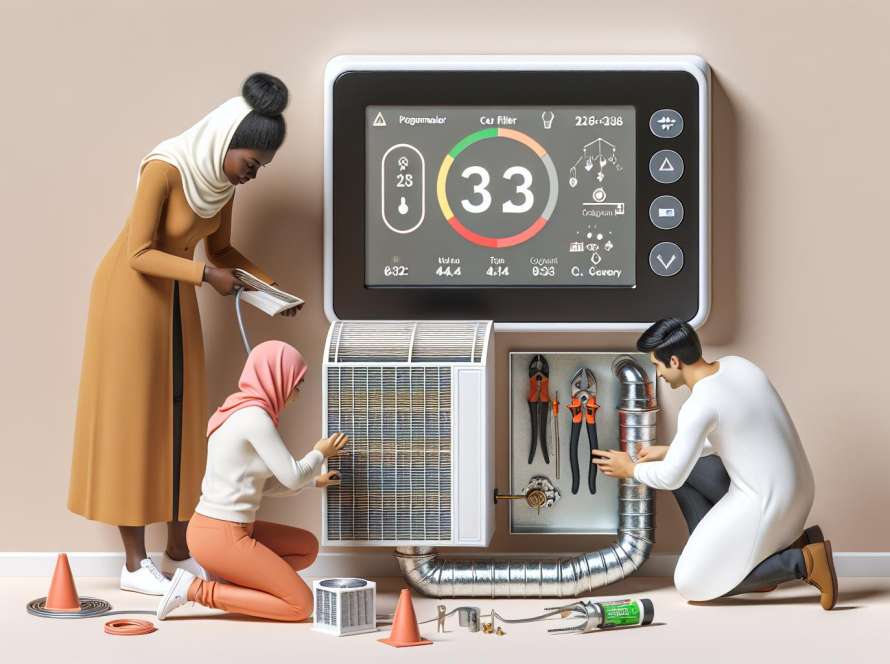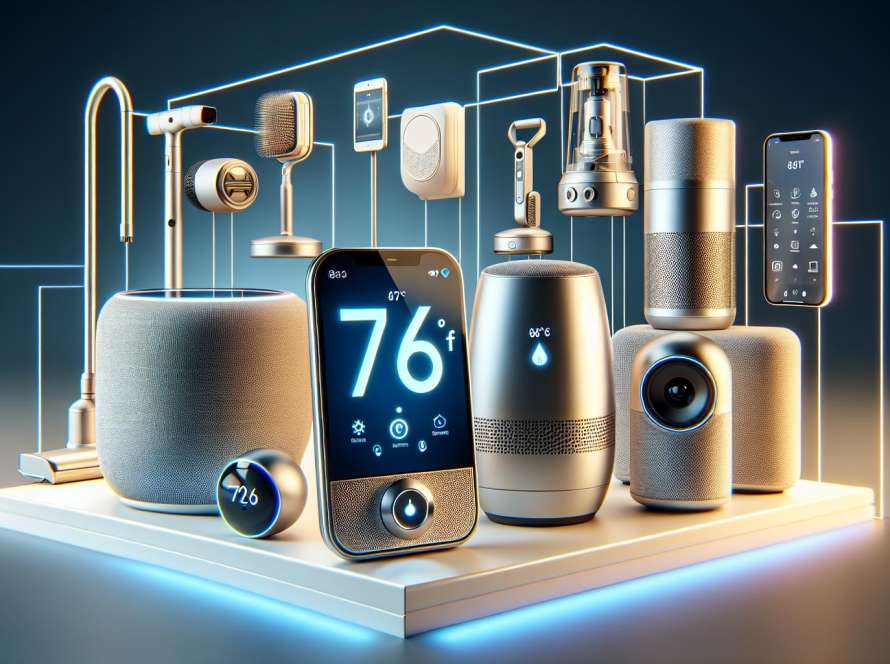Welcome to our comprehensive guide to Florida home humidity control. Living in the Sunshine State has its perks, but the high humidity levels can pose challenges for maintaining a comfortable indoor environment. From preventing mold and mildew to ensuring optimal air quality, managing humidity is crucial for both our health and the integrity of our homes.
In this guide, we’ll delve into practical tips and strategies to help us effectively regulate humidity levels in our Florida homes. Whether you’re a long-time resident or new to the state, understanding how to strike the right balance in humidity control is essential for creating a cozy and healthy living space. Let’s explore the best practices and innovative solutions to keep our homes comfortable and free from the negative effects of excessive moisture.
Understanding the Impact of Humidity in Florida Homes
In Florida, humidity levels can significantly affect our homes. Let’s dive into how this impacts us and how to tackle it effectively at all experience levels.
For Beginners: Managing the Basics
- Excessive humidity can lead to mold and mildew growth.
- Use a dehumidifier to maintain humidity levels below 60%.
- Ensure proper ventilation in bathrooms and kitchens.
For Intermediate Homeowners: Enhancing Your Control
- Check humidity levels with a hygrometer regularly.
- Seal windows and doors to prevent moisture intrusion.
- Consider air purifiers with dehumidifying functions.
- Invest in a whole-house dehumidification system for comprehensive control.
- Conduct regular HVAC maintenance to optimize humidity regulation.
- Utilize ** moisture-absorbing materials** like silica gel in closets.
Remember, whether you’re a beginner or an expert, maintaining ideal humidity levels in your Florida home is key to a comfortable and healthy living environment.
Identifying Signs of High Humidity Levels

For Beginners: Recognizing the Basics
- 60% humidity or higher
- Condensation on windows
- Musty odors
- Mold growth on walls or ceilings
For Intermediate Homeowners: Delving Deeper
- Peeling paint or wallpaper
- Warped or rotting wood
- Increased pest activity
- Allergy flare-ups
- Use of hygrometers for accurate readings
- Thermal imaging to pinpoint moisture sources
- Consulting with professionals for moisture mapping
| Humidity Level | Signs |
|---|---|
| 60% – 70% | Condensation, musty odors |
| Above 70% | Visible mold, peeling paint |
| Above 80% | Severe structural damage |
Tips for Regulating Humidity Indoors
For Beginners: Getting Started
- Invest in a Dehumidifier: A simple and effective way to reduce humidity levels in your home.
- Use Ventilation: Proper airflow can help combat moisture buildup.
- Fix Leaks: Address any water leaks promptly to prevent excess moisture.
- Avoid Overwatering Plants: Keeping plant watering under control can help maintain humidity levels.
For Intermediate Homeowners: Fine-Tuning Your Methods
- Seal Windows and Doors: Prevent outside moisture from seeping in through gaps.
- Use Exhaust Fans: Especially in areas prone to humidity like bathrooms and kitchens.
- Monitor Indoor Plants: Ensure plants are not contributing to indoor humidity levels.
- Check HVAC System: Regular maintenance can improve humidity control.
- Install a Whole-House Dehumidifier: Ideal for maintaining optimal humidity levels throughout your home.
- Consider a Humidistat: Helps automate and regulate humidity levels.
- Insulate Pipes: Prevent condensation and moisture issues.
- Consult with Professionals: Get a professional assessment for tailored solutions.
| Optimal Humidity Levels for Indoor Comfort |
|---|
| Recommended Range: 30% – 50% |
| High Humidity Levels: Above 60% |
| Severe Structural Damage Risk: Above 80% |
Using Dehumidifiers and Air Conditioners Effectively
For Beginners: Using Dehumidifiers
- Place dehumidifiers in high moisture areas like basements.
- Keep windows and doors closed while the dehumidifier is running.
- Regularly empty and clean the water collection bucket.
- Set humidity levels between 30% to 50.
For Beginners: Operating Air Conditioners
- Clean or replace filters every few months.
- Check for any leaks or blockages in the system.
- Program the thermostat to maintain optimal humidity levels.
For Intermediate Users: Optimizing Dehumidifiers
- Consider a whole-house dehumidifier for comprehensive control.
- Use humidistats to monitor and adjust humidity levels as needed.
- Schedule regular maintenance to ensure optimal performance.
For Intermediate Users: Enhancing Air Conditioner Efficiency
- Seal windows and doors to prevent moisture from entering.
- Utilize ceiling fans in conjunction with the air conditioner for better air circulation.
- Invest in a smart thermostat for efficient cooling based on your schedule.
- Integrate HVAC systems with dehumidifiers for a centralized approach.
- Upgrade to energy-efficient models for cost savings.
- Consult professionals for personalized recommendations.
Remember, proper maintenance and monitoring are key to maintaining ideal indoor humidity, especially in humid climates like Florida.
Exploring Natural Methods to Control Humidity

Humidity control in Florida homes can be challenging due to the state’s tropical climate. High humidity levels can lead to discomfort, mold growth, and potential damage to property. To combat these issues, we can explore natural methods that assist in effectively managing humidity levels in our homes.
For Beginners: Getting Started
- Utilize Natural Ventilation: Open windows and doors when the weather allows to help air circulation.
- Use Houseplants: Certain plants, like peace lilies and Boston ferns, can naturally absorb humidity.
- Ventilation Fans: Properly use exhaust fans in bathrooms and kitchens to reduce moisture build-up.
- Silica Gel Packets: Place these in areas prone to dampness, like closets, to absorb excess moisture.
For Intermediate Users: Enhancing Control
- Dehumidifying Bags: Invest in moisture-absorbing bags for closets, cabinets, or storage areas.
- Baking Soda: Leave open boxes of baking soda in humid spaces to help absorb moisture.
- Charcoal Briquettes: Charcoal can assist in absorbing excess moisture in enclosed spaces.
- Salt Bowls: Fill bowls with salt and place them in rooms to absorb humidity.
- Use Rock Salt: Fill bowls with rock salt to effectively decrease humidity levels in larger spaces.
- Create a DIY Dehumidifier: Make a homemade dehumidifier using a fan and calcium chloride crystals.
- Electric Dehumidifiers: Opt for energy-efficient electric dehumidifiers for precise humidity control.
- Hygrometers: Utilize hygrometers to monitor humidity levels and adjust methods accordingly.
Incorporating these natural methods into your home can significantly improve humidity control, creating a more comfortable and healthier living environment.
Conclusion
Managing humidity in Florida homes is crucial for creating a comfortable and healthy living space. By incorporating natural methods like ventilation, houseplants, dehumidifying bags, and DIY solutions, we can effectively regulate humidity levels. These strategies not only combat the challenges of Florida’s tropical climate but also promote better indoor air quality. Embracing these tips can make a significant difference in maintaining an optimal humidity balance, ensuring a more pleasant environment for us to thrive in.

